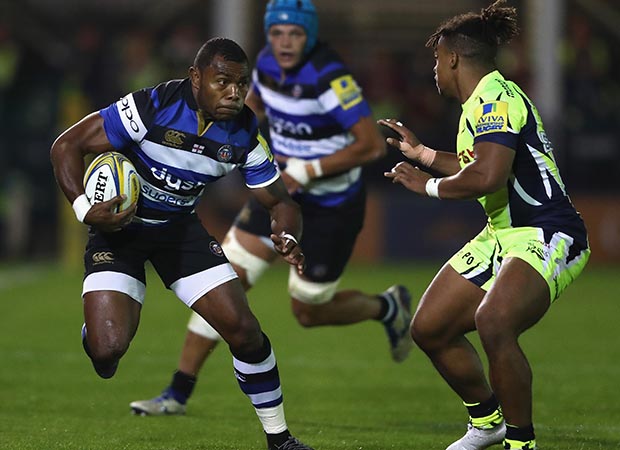 As Eddie Jones gets a taste of what it’s really like being head coach of England, he must have been thanking his lucky stars that he was afforded a running start at the job with no real injury concerns affecting his first 12 months in charge, except Manu Tuilagi of course.
As Eddie Jones gets a taste of what it’s really like being head coach of England, he must have been thanking his lucky stars that he was afforded a running start at the job with no real injury concerns affecting his first 12 months in charge, except Manu Tuilagi of course.
Having had the best of introductions, with England winning nine games on the bounce, he has seen his reputation as a top-line coach lauded by all; although he might now be thinking that his luck could be running out.
Good coach that he is, he has been fortunate with a squad that has remained remarkably injury-free but all that has changed since the start of this season. Injury after injury has shorn the Elite Player Squad (EPS) of some of the biggest stars of his reign.
James Haskell, Maro Itoje, George Kruis, Jack Nowell and Anthony Watson all took their chance when Fast Eddie gave them the shot of making that England shirt their own and have paid him back by being the backbone on which success was built, with a little help from the vision of George Ford and the boot of Owen Farrell.
Even the exciting new talents that we hoped to see being given a chance because of those injuries have ended up injured themselves. Notably Sam Jones, whose injury during an England training session filled the Press.
With all this woe, most national coaches would be in tears, even Eddie back in his days coaching Australia would have despaired as such a list of injuries but not now.
The major advantage England have always had is numbers and, with the biggest player base in the rugby world, the one thing we have is a lot of choice. Admittedly, not all are international standard but, and this is the big but, thanks to the injury crisis suffered by Stuart Lancaster throughout his reign as head coach, Eddie has a long list of experienced internationals who have been discarded for various reasons.
He has already bought back Dylan Hartley with some success and there is no reason to doubt those like Joe Launchbury, Dave Attwood, Courtney Lawes and Semesa Rokoduguni will take the chance that injury has given them.
The autumn internationals should still be relatively easy picking for a confident and committed England.
South Africa are struggling to come to terms with the quota system hoisted on them by their politicians while Australia are in the process of rebuilding a side that has been around for an age.
This is not underestimating either Fiji or Argentina, in fact, I believe that Argentina are the side that have the best chance of upsetting England.
Their inclusion in the Rugby Championship has seen them improve their total game in leaps and bounds and if England show any complacency, they could easily be embarrassed. Fiji, on the other hand are fantastic athletes as the gold in the Olympic Sevens showed, but not really up to the disciplined tight play of the 15-a-side game.
All in all, Eddie’s smile won’t be dimmed by what has happened, in fact it may help him get a better idea of how close he is to his goal of having three players for every position without having to experiment too much.
Alex Lowe wrote an interesting piece in the Times in which he sought to show how props have changed in the modern game.
I found it a bit insulting to those who played in the front row in previous eras. The stereotype of props being virtual statues moving slowly round the pitch waiting for the next scrum is so far from the truth as to be an insult.
When, at 15, I was selected at schoolboy county level, the first thing I was taught was that the prop was the last line of defence and, when breaking from a scrum as the last players up, we were to ‘corner flag’ and tackle anyone who broke through the backline or act as ‘second runners’ from any recycled ball.
In open play, front row players were always among the tackle-count leaders, in fact Jason Leonard and Phil Vickery were often notably higher than most of the back row.
In attack we were expected to carry the ball into the heart of the opposition especially from a lineout. As the main cleaner of a tapped ball, the prop was expected to either peel round the back linking with his own backs or take out the opposing flyhalf to create an overlap or attack the lineout setting up a maul.
From scrums, not only did the front row provide the ball through various channels to allow the best option for defence or attack but were expected to be the second wave of ball carriers of any recycled ball from a back-row move.
Much of this work was carried out in the thick of a forward battle that entailed more players from each pack than the current game.
Props now are no better or worse but the game has moved on allowing them to appear more in open play showcasing the talents that we all had but only those that understood the game could see.
Correspondent Graham Sutton asked what an anti-wheel was? It’s when the loosehead goes back instead of, usually, the tighthead, turning the scrum from left to right as opposed to right to left.























